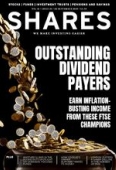Archived article
Please note that tax, investment, pension and ISA rules can change and the information and any views contained in this article may now be inaccurate.
A glimpse inside the mind of fascinating investor Howard Marks

Howard Marks is an American investor and author who has come to be viewed as something of a ‘sage’ in recent years.
His name is often mentioned in the same reverential tones as Warren Buffett, who describes The Most Important Thing on the jacket as ‘that rarity, a useful book’.
Buffett also admits that when he sees one of Marks’ memos, which are published several times a year and available to everyone on Oaktree Capital’s website, they are the first thing he reads.
‘UNCOMMON SENSE FOR THE THOUGHTFUL INVESTOR’
After more than 25 years in investment banking, Marks founded Oaktree Capital in 1995. Today the company manages $120bn in alternative investments ranging from credit and real assets to private and public equities. Last year its closed-end funds gained 9% despite the final quarter sell-off which wrecked returns at many other firms.
Unlike most great investors, Marks isn’t hung-up on high-quality stocks. In fact he typically avoids them because they trade at high multiples and everyone has high expectations of them, which in his view makes them risky.
Instead he looks for what other people consider risky: cheap, unloved assets which are so downtrodden that they have substantial upside if things go right and minimal downside if they go wrong. Much of the book is taken up with risk, how to recognise it and control it, but certainly not how to avoid it.
ORIGINS AND INSPIRATIONS
By Marks’ own admission there is no single, most important thing. In his early meetings with some Oaktree clients he would insist that cheap valuations were the most important thing while with others he would insist it was controlling risk.
In one of his memos from 2003 he actually listed 19 ‘most important things’, and that memo became the basis for this 2011 book.
What he sets out to explain, unlike the writers of most investment books, is that successful investing isn’t easy. In fact it’s extremely hard, and there’s certainly no ‘magic formula’.
For example, contrary to popular belief buying risky assets doesn’t guarantee you high returns. If it did they wouldn’t be risky and everyone would be doing it.
By the same token, just because one outcome is the most likely across a range of outcomes there is no guarantee that it will happen. As the economist Elroy Dimson said, ‘risk means more things can happen than will happen’.
THE MOST IMPORTANT THING(S)
Each reader may come away with a different view as to what is the most important thing, but for Marks it begins with value and its relationship with price.
Just as high quality stocks can be risky if bought at the wrong price, so poor quality stocks can be a good investment if the price is far enough below the underlying value.
This is where investors like Marks get their hands dirty doing deep fundamental analysis in order to establish what they believe is the underlying value.
Even when stocks are trading well below their underlying value, it still takes a strong contrarian streak to buy. Most of us are happiest buying what other people like and going with the flow rather than making trouble for ourselves by buying what other people think is ‘junk’ or is going bust.
As American writer Will Rogers said, however, ‘you’ve got to go out on a limb sometimes because that’s where the fruit is’.
As long as you build in a ‘margin of safety’ – a concept Buffett has sworn by since he started investing – and you pay less than the asset is worth then the risk/reward is good.
Along with a contrarian streak, you need patience because you can be right with your view but be wrong with your timing. As economist John Maynard Keynes warned, markets can stay irrational longer than most of us can stay solvent.
BE AWARE OF THE CYCLE
While buying low and selling high is the aim, you need to be aware of market cycles. The market is like a pendulum swinging between over-valuation and under-valuation, euphoria and depression, greed and fear. Most importantly, it’s hardly ever at the middle.
Individually and collectively we tend to think that the future will look like the recent past. When markets have been rising for a long time, we assume that they will continue rising.
When euphoria takes over, we start to think we are in some kind of ‘new era’ and that stocks will carry on rising indefinitely. As another great investor John Templeton said, the most dangerous words in the English language are ‘this time it’s different’.
The point is it’s never different. Cycles are self-correcting, so you need to be aware of where we are in the cycle and whether risk is being priced correctly. When optimism, stock prices and valuations are high, the chances are people aren’t paying enough attention to risk or to the cycle.
BE LUCKY, BUT TAKE OUT INSURANCE
Finally, you need to understand the role of chance or luck. You can make a stellar return on your investment just through being lucky because the price can go up for completely different reasons to the ones you expected.
It’s impossible to know whether an investor is good or bad just by measuring their returns because you don’t know how much risk they took to get them.
Controlling risk is like buying house insurance: you might be lucky and not need it but if you don’t have it and your house burns down – or the market collapses – you’ve lost everything.
Marks’ views won’t be to everyone’s tastes, but if you think all investment books are the same, seek out a copy.
Important information:
These articles are provided by Shares magazine which is published by AJ Bell Media, a part of AJ Bell. Shares is not written by AJ Bell.
Shares is provided for your general information and use and is not a personal recommendation to invest. It is not intended to be relied upon by you in making or not making any investment decisions. The investments referred to in these articles will not be suitable for all investors. If in doubt please seek appropriate independent financial advice.
Investors acting on the information in these articles do so at their own risk and AJ Bell Media and its staff do not accept liability for losses suffered by investors as a result of their investment decisions.

 magazine
magazine









